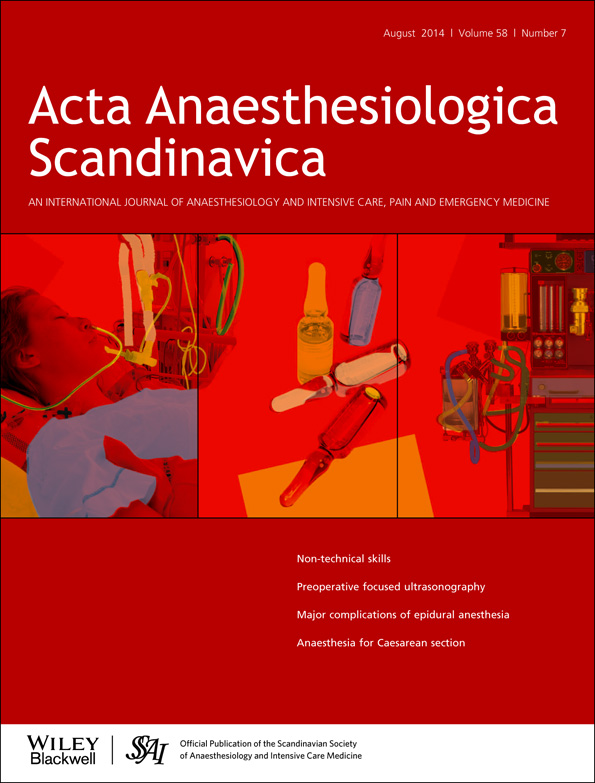Tissue near infra red spectroscopy change is not correlated with patients' outcome in elective cardiac surgery
Abstract
Background
Microcirculatory disturbances following cardiac surgery with cardiopulmonary bypass (CPB) are thought to be at the origin of organ dysfunction, although few studies have correlated microvascular alterations with outcome. We aimed to assess the microcirculation with near infrared spectroscopy (NIRS) and correlate NIRS parameters with intensive care length of stay and organ dysfunction.
Methods
Forty patients at increased risk of postoperative systemic inflammatory response syndrome after an elective cardiac surgery with CPB were included in this prospective observational study. Microcirculation of the thenar eminence was analysed by NIRS technology, through the tissue oxygen saturation (StO2) and the recovery slope after an ischaemic challenge. Organ dysfunction was assessed with the Sequential Organ Failure Assessment (SOFA) score. Microcirculation parameters were recorded at baseline, at different time points during the surgery and the first 48 postoperative hours.
Results
StO2 at baseline was 82% and decreased significantly until 77% at 2 h after CPB. Recovery slope values were 4.3% per second at baseline and decreased to 2.5% per second during CPB (P < 0.05). From 12 h after CPB time point, both parameters were not statistically different from baseline anymore. We found no correlation between microcirculatory parameters and mean arterial pressure, cardiac index, intensive care unit (ICU) length of stay or SOFA score.
Conclusion
This study confirms, through a non-invasive technology, a significant but transient alteration of the microcirculation during elective cardiac surgery. However, as these microvascular alterations were not correlated with patient's outcome, NIRS-derived parameters seem to be of limited interest in the cardiac surgery setting.




